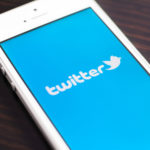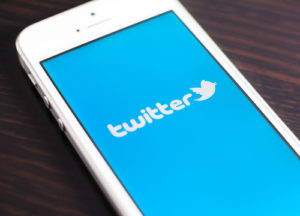As Sean Quinn, a senior at the University of Florida, sat in a visual communications course one morning last September, FOMO was slowly tightening its grip.
Editor’s note: This article first ran in January 2014 and we at eCampus News thought it deserved another round. Share your views by leaving a comment below and by joining the conversation on Twitter @ecampusnews.
 Jeff Darlington, a reporter for NFL Network, was speaking to the university’s sports media class that day over Skype, and Quinn was missing out. Finally, he caved, logging onto Twitter to follow the course’s hashtag and get a taste of Darlington’s guest lecture.
Jeff Darlington, a reporter for NFL Network, was speaking to the university’s sports media class that day over Skype, and Quinn was missing out. Finally, he caved, logging onto Twitter to follow the course’s hashtag and get a taste of Darlington’s guest lecture.
“Major #FOMO on my friends’ #SportsMediaUF class tweets,” he tweeted. “Wish I could’ve taken it again.”
For students like Quinn, FOMO, or “fear of missing out,” may just be a passing moment, or simply the anxious cousin of the popular phrase “YOLO” (You Only Live Once). For others, it’s more than a hashtag, and they are increasingly turning to Twitter and Facebook during class time to help with the anxiety it causes.
Joseph Nowsinki, a psychologist who argues that fear of missing out should be taken seriously as a mental health issue, says FOMO can manifest as an addiction to staying connected to others.
That’s an itch that is far easier to scratch when you have networks comprised of hundreds of your peers available at any moment right on your phone. Like any addiction, it can have real and lasting consequences on a student’s education.
“It goes beyond simply being ‘connected’ and is a form of social anxiety that can become debilitating,” Nowinski said. “Fear of missing out can evolve into an addiction, and like all addictions it definitely can take over a person’s life and interfere with other activities and responsibilities, including studies.”
Nearly four in 10 college students said they can’t go 10 minutes without checking one of their mobile devices, according to a 2011 study conducted by CourseSmart.
Since then, the number of mobile devices on campuses and in classrooms has increased by more than 260 percent at some colleges and universities.
“The trend of checking devices is going to get worse for a while before it gets better,” said Julie Germany, cofounder of the Association for Social Media and Higher Education, and former director of the George Washington University’s Institute for Politics, Democracy, and the Internet, said in 2011. “For many people, connecting through text, eMail, chat, and social media has become an important interruption.”
More than 70 percent of online adults now use social networking websites, a recent Pew Research survey found. Forty percent of Facebook users check the site multiple times a day, as do 46 percent of Twitter users.
Half of faculty think social media is nothing but a distraction for students, according to a survey of 8,000 faculty members conducted by Babson Survey Research Group and Pearson, though Nowinski said that isn’t always the case.
“Checking in on the social network or texting several times a day appears to be fairly normative these days and does not necessarily interfere with other activities,” he said. “That said, pretty much everyone also agrees that a lot of people are ‘tethered’ to the net and experience anxiety at the prospect of being without their smart phones.”
Or, as Emily Rhine, a freshman at Texas Christian University, tweeted, “college is a permanent struggle between FOMO and exhaustion.”
Follow Jake New on Twitter at @eCN_Jake.
- What does higher-ed look like in 2023? - January 5, 2015
- Are ed-tech startups a bubble that’s ready to burst? - January 1, 2015
- Are MOOCs really dead? - August 28, 2014
